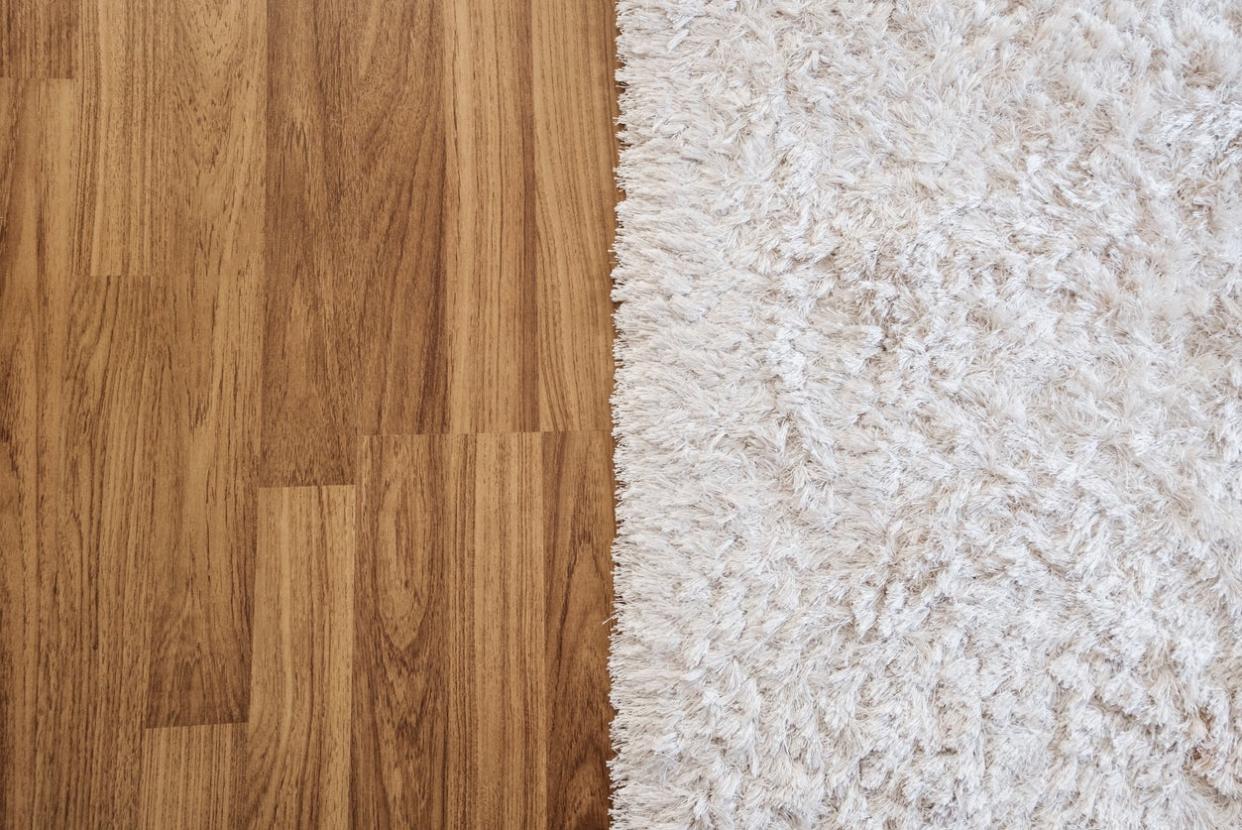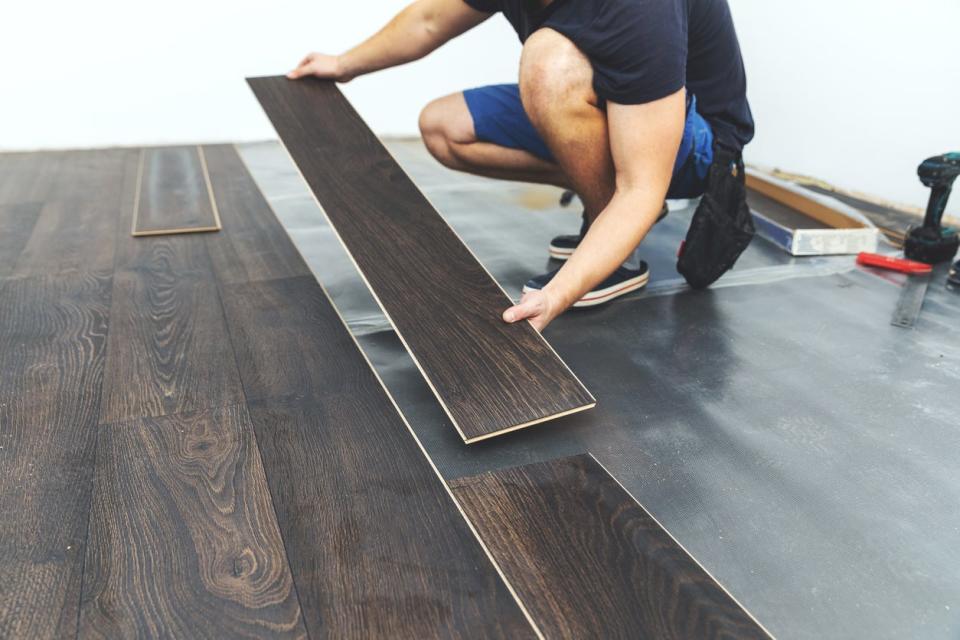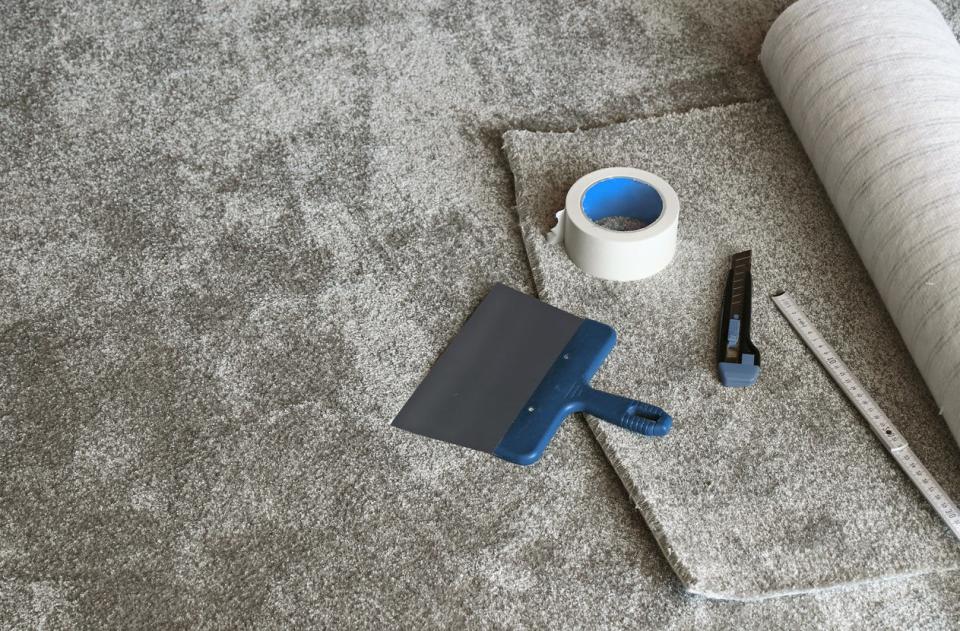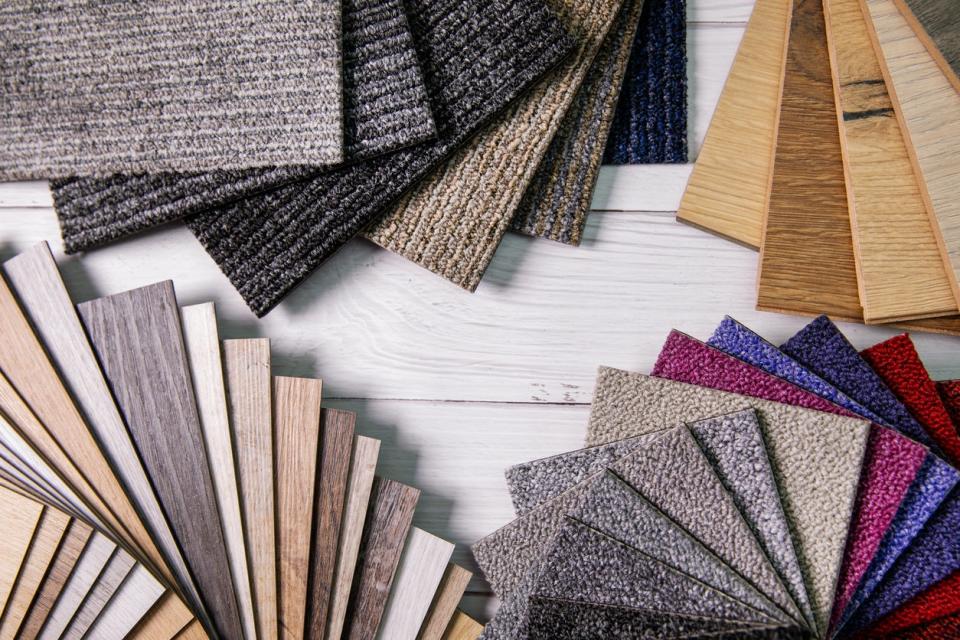The Cost of Carpet vs. Laminate: 7 Factors to Consider When Choosing New Flooring

When homeowners are deciding between carpet and laminate flooring, one of the most important considerations for them to keep in mind is the cost associated with each option. Both carpeting and laminate flooring have their own price points, and understanding these costs is critical when homeowners are making a choice that works with their budget and lifestyle needs.
Laminate flooring, known for its durability and easy maintenance, comes with a range of cost factors. The cost to install laminate flooring ranges from $1,400 to $4,616, with many homeowners spending an average of $2,879. Including labor and material costs, laminate flooring averages between $6 and $14 per square foot. The up-front cost of laminate flooring installation can vary based on the quality of the materials and the complexity of the installation process. For those looking for budget-friendly options, low-cost laminate flooring can be a viable choice, offering a balance between affordability and durability. While there is no such thing as waterproof laminate flooring, most laminate flooring options are water-resistant, which means they can last a significant length of time without absorbing moisture. This makes laminate appropriate for installation in high-moisture areas, such as kitchens and bathrooms. When homeowners are considering laminate flooring, it’s not just the initial cost they’ll need to examine; knowing how to clean laminate floors properly is important to maintaining their appearance and longevity. Routine cleaning with a damp mop or manufacturer-recommended cleaning solution can help prevent damage and preserve the floor’s aesthetic appeal, potentially reducing the need for costly repairs down the line.
Carpet installation cost runs from $785 to $2,805, with the national average at $1,772. Carpeting can cost from $3.50 to $11 per square foot, or about $32 to $100 per square yard. The cost of carpeting ranges from $2 to $7 per square foot on average, but it’s common to see prices anywhere from $1 to $20 per square foot. The cost of carpet per square foot can vary widely based on the type of carpet fiber, pile height, and overall quality. While the initial carpet installation cost might be lower than the cost of laminate flooring, it’s important to consider the long-term costs. Over time, factors such as carpet replacement cost and carpet removal cost can contribute significantly to the overall amount spent on carpeting. Depending on daily wear and tear, carpets may need to be repaired, replaced, or deep-cleaned more frequently, adding to the cumulative costs. Homeowners who are weighing the cost of carpeting will want to keep in mind the intangible benefits. For example, carpeting provides a plush and comfortable surface, making it a preferred option for those that want warmth and coziness underfoot. Carpeting might not be as durable as laminate flooring in high-traffic areas, and its susceptibility to staining and fading can mean homeowners will need to factor in the cost of carpet cleaning and the cost of carpet repair, and eventually replacement.
Carpet is typically warmer than laminate flooring. The soft and plush texture of carpeting creates an insulating layer that retains heat, making it feel warmer underfoot compared to the harder surface of laminate flooring. Additionally, carpet acts as a natural thermal insulator, providing a barrier that helps trap warm air and maintain a comfortable temperature within a room. This quality makes carpeting especially appealing in colder climates or during the colder months, as it can help contribute to a cozier and more insulating living environment. It also provides a level of sound insulation, which not only reduces noise but also contributes to a sense of warmth and comfort. For homeowners looking to buy carpeting for their home, the best places to buy carpet also include online options.
In contrast, laminate flooring is made of harder materials and does not have the same insulating properties as carpet. Laminate can feel cooler to the touch, and it does not provide the same level of natural insulation against temperature variations as carpet. While laminate flooring offers other advantages, such as durability, easy maintenance, and a wide variety of design options, it may not offer the same level of warmth and comfort as carpeting.
Deliberating over carpet vs. laminate cost involves careful consideration of various cost-related factors. While low-cost laminate flooring might offer a budget-friendly and durable alternative to carpet, carpet’s ongoing maintenance costs, which can include the price to rent a carpet cleaner, might counter its initial low up-front cost. It’s recommended that homeowners consider which flooring type would work best with their lifestyle, where the flooring will be installed, their design preferences, and the maintenance level for both types of flooring. The best choice will be the type of flooring that will fit their budget and will complement the overall living space.
1. Carpet and laminate flooring have similar cost ranges, but laminate tends to have a slightly higher up-front cost.
It’s interesting to note that both flooring options generally fall within comparable cost ranges, but it’s worth highlighting that laminate flooring tends to carry a slightly higher initial expense. Laminate flooring, recognized for its durability and versatile designs, has a higher up-front cost compared to carpeting. This difference in initial cost can be attributed to the materials used in laminate flooring, which often include high-density fiberboard and intricate photographic layers that replicate the appearance of natural wood or tile. This manufacturing process, while contributing to the durability and visual appeal of the laminate flooring, translates into a more elevated price point. Its resilience to wear and tear, easy maintenance, and broad design options might justify the additional investment over time for many homeowners.

Photo: istock.com
Carpeting often has a lower cost, and the range of carpet prices is influenced by factors such as the overall quality, the type of carpet fiber, and the pile height. The long-term costs related to maintenance, hiring the best carpet cleaning companies, and potential replacement can gradually cancel out the initial cost savings.
2. Carpet may cost less to install than laminate, but laminate flooring can cost less to maintain over time.
Maintaining laminate flooring is relatively straightforward and can significantly contribute to its longevity and visual appeal. The durable nature of laminate makes it relatively easy to care for, but it requires routine cleaning to preserve its original look and ensure its longevity. Several common maintenance practices can help homeowners keep their laminate flooring looking like new for longer.
Sweep or vacuum. Laminate flooring needs to be cleaned regularly to remove dust, dirt, and debris from the surface of the floor. This can be done by sweeping with a soft-bristle broom or using a vacuum cleaner with a soft brush attachment. Regular sweeping or vacuuming helps prevent small particles from scratching the laminate.
Damp mopping. When cleaning, homeowners will want to use a slightly damp mop to clean the floor. It’s important to wring out excess water from the mop to avoid oversaturation, since excessive moisture can damage laminate over time.
Cleaning solution. When damp mopping, it’s recommended that homeowners use a manufacturer-approved laminate floor cleaner or a mild pH-neutral cleaning solution diluted with water. It’s a good idea to avoid harsh chemicals, abrasive cleaners, or excessive water, which can damage the flooring.
Spills and stains. Cleaning spills with a clean, damp cloth and drying the area thoroughly can prevent liquids from seeping into the seams and causing swelling or warping.
Protective measures. It’s recommended that homeowners use mats or rugs at entryways to trap dirt and moisture before it reaches the laminate floor. Additionally, using felt or rubber pads under furniture legs can help prevent scratches and dents.
3. Laminate flooring tends to have a longer lifespan than carpet, so homeowners will need to pay to replace carpet flooring sooner, increasing the overall cost.
The contrasting lifespans of laminate flooring and carpet are significant factors for homeowners to consider when deciding on a flooring option. Both low-quality laminate and carpeting will last less than 3 years, while quality carpet and laminate flooring can last between 8 and 10 years. High-quality laminate can last up to 30 years with proper care. The prolonged durability of laminate flooring contributes not only to its resilience but also to potential long-term cost savings for homeowners. Laminate flooring typically lasts longer than carpet and can better withstand foot traffic, furniture movement, and general usage.

Photo: istock.com
Carpet, while providing a soft and comfortable flooring surface, often has a shorter lifespan. The carpet fibers can gradually break down over time, especially in high-traffic areas, leading to visible wear, matting, and fading. Carpeting will typically last between 5 and 20 years. The degradation can prompt homeowners to consider carpet replacement sooner than they might with laminate flooring. When the time comes to replace old carpeting, the best carpet installation companies can remove the old carpet, properly measure stairs for carpet installation, and update the look of a home with fresh carpet.
4. Although both carpet and laminate flooring can be installed as a DIY project to save money, installing carpet is often best left to a professional.
A DIY installation is tempting when it comes to both carpet and laminate flooring. It’s important to recognize that while laminate flooring installation can often be successfully completed by handy homeowners, the installation of carpeting often warrants the expertise of a professional. Laminate flooring, with its interlocking design and straightforward installation process, lends itself well as a DIY project. Many laminate flooring options utilize a click-and-lock mechanism that facilitates a relatively simple installation. Homeowners with basic DIY skills, the right tools, and the willingness to commit the required time can often complete the installation successfully, potentially cutting down on labor costs. Homeowners who would rather hire one of the best laminate flooring installation companies can save themselves the time and effort of attempting a DIY installation on their own.
Carpet installation is a more intricate project that requires specialized tools and the knowledge of specific techniques. Properly installing carpet involves stretching, cutting, seaming, and ensuring a snug fit. The process requires a level of precision and expertise to prevent issues such as uneven seams, wrinkles, or bunching. Missteps during carpet installation can lead to unsightly warped and wrinkled carpet that can cause injuries due to tripping. Experienced carpet installers have the knowledge and skill to ensure a flawless installation, improving the longevity and appearance of the carpet. Professional carpet installation often comes with warranties and guarantees that provide homeowners with additional peace of mind.

Carpet, hardwood, tile, vinyl, and laminate flooring.
Bob Vila has partnered with Empire Today® to help you easily get beautiful new floors at a great price.
Free In-Home Estimates
5. The durability of laminate floors means less money spent cleaning spills and repairing water or heat damage.
The contrasting lifespans of laminate flooring and carpet are significant factors for homeowners to consider when deciding on a flooring option. Both low-quality laminate and carpeting will last less than 3 years, while quality carpet and laminate flooring can last between 8 and 10 years. High-quality laminate can last up to 30 years with proper care. The prolonged durability of laminate flooring contributes not only to its resilience but also to potential long-term cost savings for homeowners. Laminate flooring typically lasts longer than carpet and can better withstand foot traffic, furniture movement, and general usage.
6. Laminate flooring can have a better return on investment (ROI) than carpet; its durability and low maintenance requirements can be attractive for potential home buyers.
The investment in laminate flooring can indeed yield a more favorable ROI compared to carpet, and this financial advantage is underscored by the lasting durability and minimal maintenance demands that laminate offers. These qualities can significantly enhance the attractiveness of a home to potential buyers, making laminate flooring a strategic choice for homeowners seeking to maximize their property’s value. Laminate comes in an array of patterns, colors, and textures that can mimic the look of hardwood, tile, or stone, providing a versatile canvas for homeowners to personalize their living space. This versatility can be attractive to buyers who are looking for a flooring option that complements their unique tastes and allows for easy integration with the existing decor.
New flooring in a home can provide a 70 percent to 80 percent ROI. Laminate flooring will have a higher ROI over carpeting, but neither will match the higher ROI related to the cost of installing a hardwood floor. Keeping these factors in mind can help homeowners decide between laminate vs. hardwood flooring if this is something they’re considering.
7. When it comes to choosing between carpet and laminate, homeowners will want to consider their tastes and preferences as well as the overall costs of the flooring material.
The process of deciding between carpet and laminate flooring encompasses a range of factors that extend beyond cost. It’s recommended that homeowners consider their personal tastes, lifestyle, and overall design preference, in addition to weighing the costs associated with each flooring material. Tastes and preferences play a central role in shaping the ambience and character of a living space. Carpet offers a soft and inviting surface, creating a cozy and comfortable atmosphere. Its warmth and sound-absorbing qualities can be appealing to those seeking a quieter and more insulated environment, and many homeowners prefer to install carpet in bedrooms. Laminate flooring’s versatility in mimicking the appearance of various natural materials, such as hardwood or stone, allows homeowners to achieve a sophisticated and contemporary look within a space. This flexibility allows them to align their flooring choice with their preferred design style, whether it’s classic, modern, rustic, or eclectic.

Photo: istock.com
Balancing these preferences with the overall costs is an important step in making an informed decision. While the initial costs of flooring installation may vary, it’s essential for homeowners to consider the broader financial implications, which include maintenance, repairs, and replacement over the lifespan of the flooring material. Laminate flooring’s durability and low maintenance can translate into long-term cost savings, whereas carpet’s comfort and aesthetic appeal may come with additional maintenance and replacement costs. Consulting with one of the best flooring companies can help a homeowner choose the best flooring for their needs.
The intended usage of the space should also guide the choice between carpet and laminate flooring. High-traffic areas, such as hallways and living rooms, may benefit from the durability of laminate, which can withstand frequent foot traffic. Bedrooms and cozy corners might be well suited for the plush comfort of carpet. By considering design tastes, lifestyle needs, and the long-term costs associated with each material, homeowners can make a choice that not only enhances their home but also works with their budget and needs.

